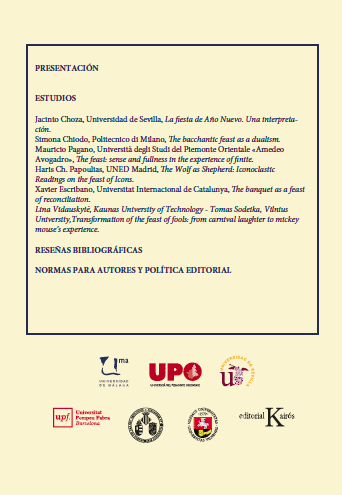Transformation of the feast of fools: from carnival laughter to Mickey mouse's experience
DOI:
https://doi.org/10.24310/Raphisa.2018.v0i4.7386Palabras clave:
CARNIVAL, FEAST OF FOOLS, LAUGHTER, EXPERIENCE, FAIRY TALE, MICKEY MOUSE, POVERTY, BAKHTIN, BENJAMIN, CHAPLIN,Resumen
The aim of the paper is a critical evaluation of Mikhail Bakhtin’s carnival laughter’s theory, and along the analysis of Walter Benjamin’s notion of laughter, and its relation to modernity. While Bakhtin concentrates his attention on a few medieval festivities, this paper focuses on the “feast of fools” (festa stultorum) as a metaphor for carnival laughter. For Bakhtin, clown, joker, etc. represents Medieval and Renaissance carnival spirit, while an animated Mickey Mouse, alongside with Charlie Chaplin’s movie character, appears in Benjamin’s texts as a figure of modernity. Carnival laughter can be cruel, and it was cruel indeed, participated in violence during the festivities. The same cruelty Benjamin had found in a few fairy tales collected by the Brother Grimm. How cruelty and laughter are connected? The lack of common experiences in modernity was the reason why Bakhtin wanted to find a counterbalance to modern atomistic bourgeois society, and laughter could have given it. According to Bakhtin, the spirit of carnival as a collective laughter gradually dried up and in the 16th century it has self-transformed into a novel and became a genre of grotesque realism. For Benjamin, only epic, architecture and cinematograph are able to create the collective experience.
Descargas
Métricas
Descargas
Publicado
Cómo citar
Número
Sección
Licencia
Los textos publicados en Raphisa son de dominio público. Tras la publicación en RAPHISA, los autores mantienen todos los derechos de autor, sin restricciones, y el copyright de sus textos.






